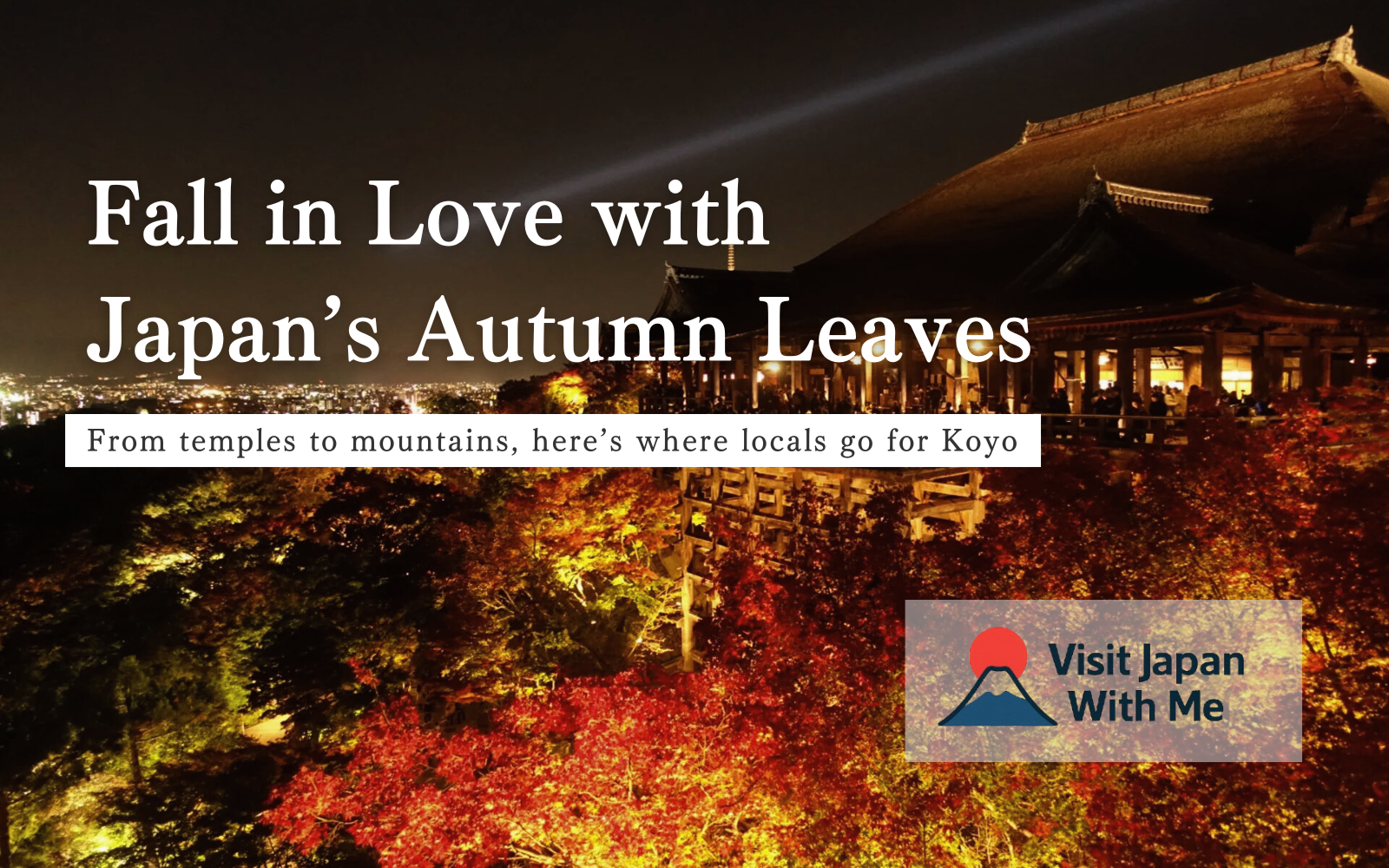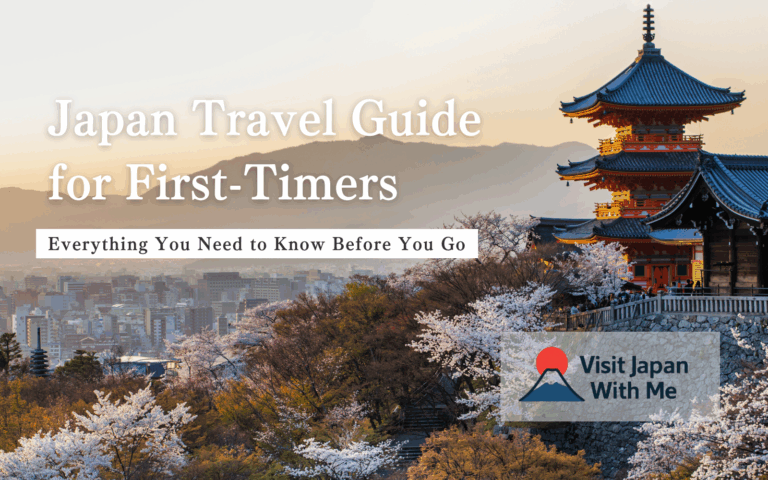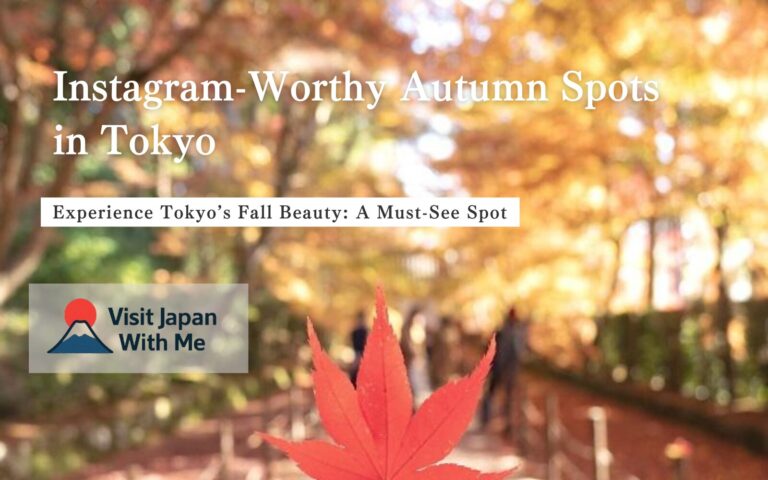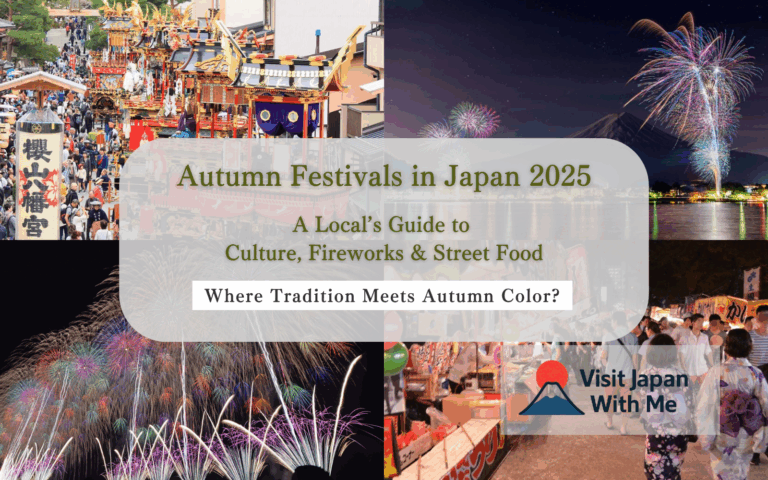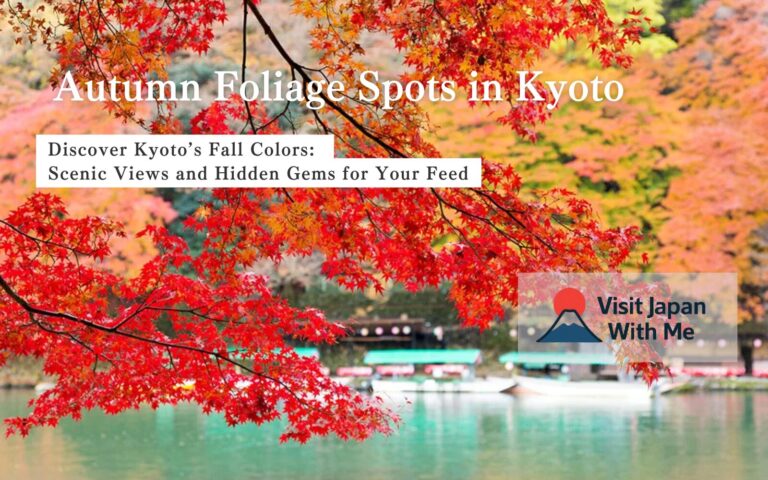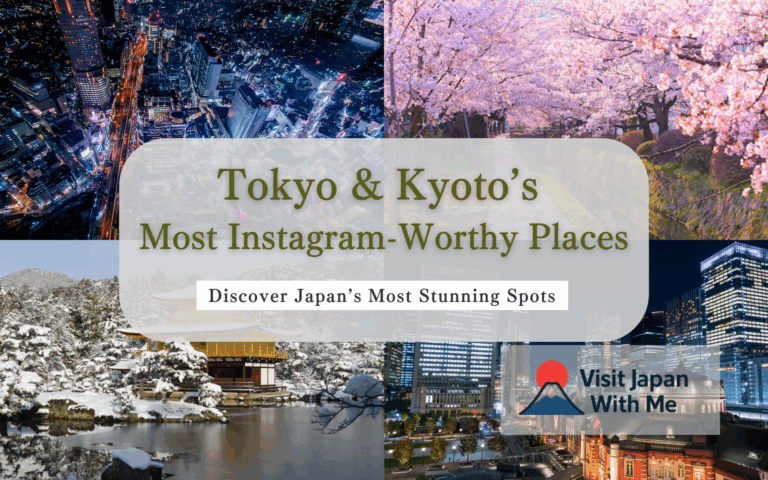Best Places to See Autumn Leaves in Japan: Koyo Season Guide for 2025
Autumn in Japan is a magical time. The air turns crisp, the skies become clear, and the trees explode in vibrant shades of red, orange, and gold. Known as “koyo” (紅葉), Japan’s autumn leaves are just as iconic as its cherry blossoms—and arguably even more breathtaking.
As someone living in Japan, I’ve experienced this season year after year and can assure you: there’s nothing quite like it. This guide is crafted to help you discover the best spots, timing, and tips for enjoying autumn foliage across the country with ease and confidence.
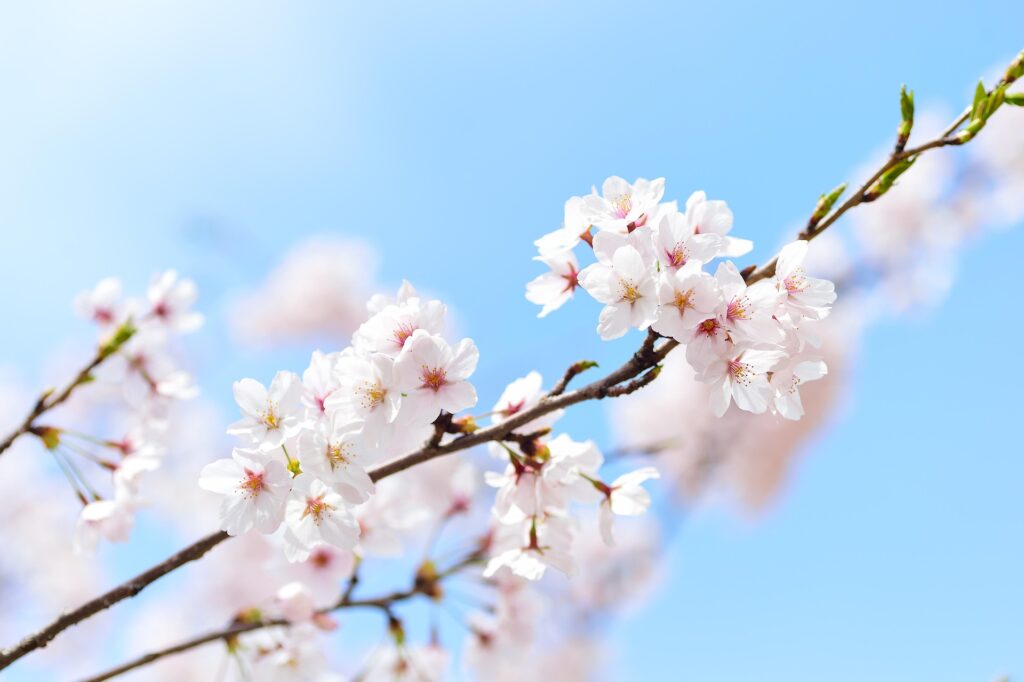
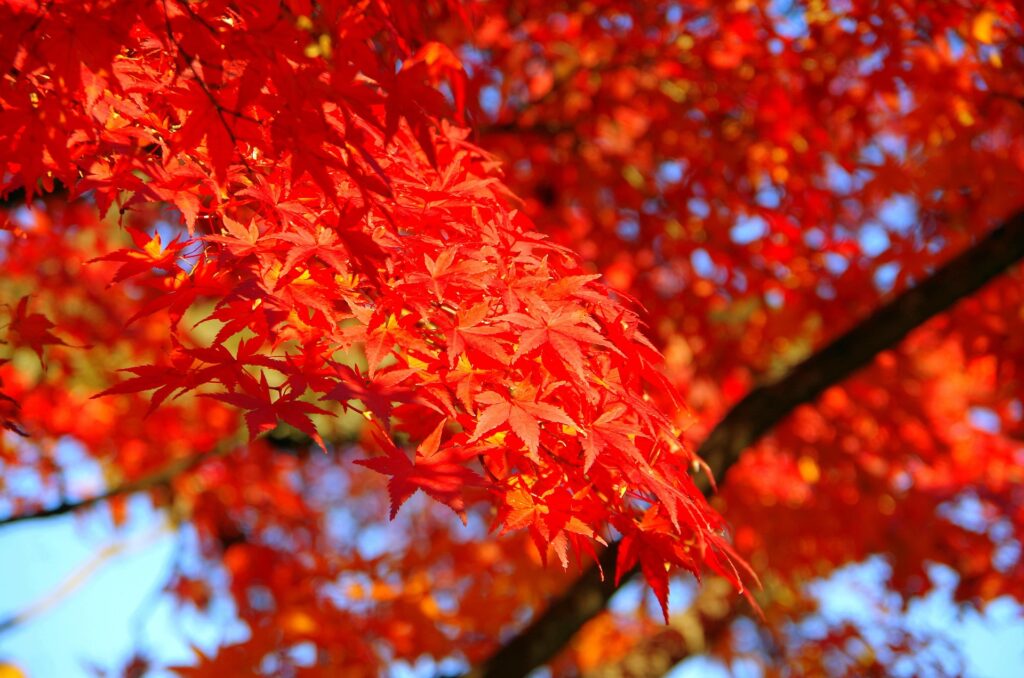
🗾 More Japan travel tips coming soon!
We’re a local team based in Japan, and we’re adding more helpful tips and real insider info soon.
Don’t miss out—bookmark this site and come back for fresh updates!
🔖 Bookmark Now🍁 When Is the Best Time to See Autumn Leaves in Japan?
Japan’s long north-to-south geography means that the koyo season stretches over two months.
- Northern Japan (Hokkaido): Late September to mid-October
- Central Japan (Tokyo, Kyoto, Nagano): Late October to late November
- Southern Japan (Kyushu): Early to mid-December
Keep in mind that the timing may shift slightly each year depending on weather patterns. Checking live foliage forecasts, like those provided by Japan Meteorological Corporation or travel sites like Japan-Guide.com, is highly recommended.
📝 Note: The official foliage forecasts for 2025 have not yet been released. This guide will be updated as soon as accurate predictions become available.
Here is an example from 2024’s foliage forecast to give you a general idea:
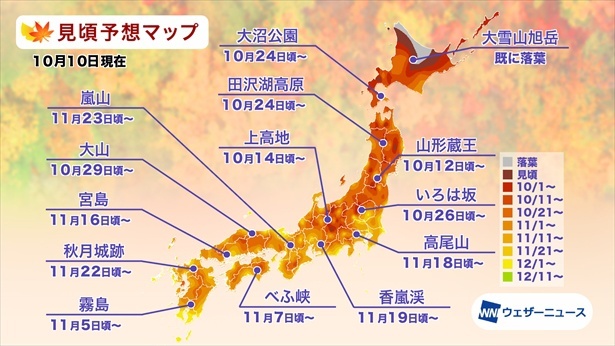
🗼 Top Spots in and Around Tokyo
1. Mount Takao (Tokyo)

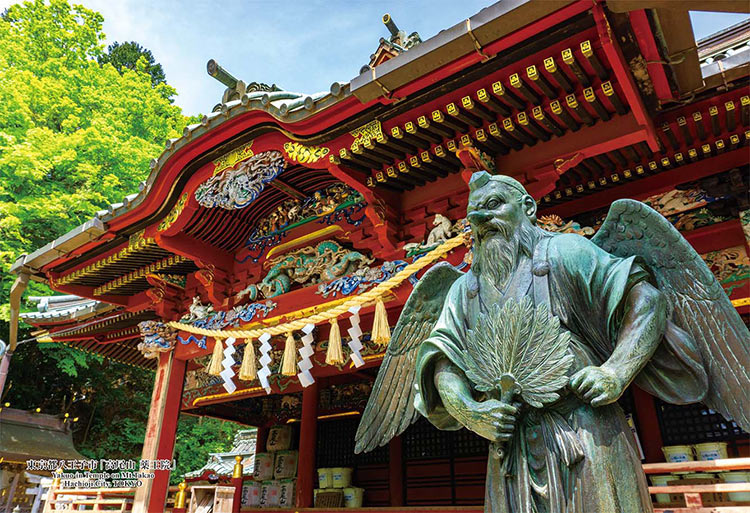
Just one hour from Shinjuku by train, Mount Takao is a favorite for both locals and tourists. From Tokyo Station, it takes about 1 hour and 10 minutes by train via the Chuo Line and Keio Line. A gentle hike, a cable car, and stunning mountaintop views make this spot ideal for a day trip.
One of Mount Takao’s biggest draws is that you can enjoy beautiful autumn foliage while hiking, making it a perfect escape for those who want both nature and a bit of exercise.
- Best time: Mid to late November
- From Tokyo Station: About 1 hour and 10 minutes by train
- Bonus: Visit the Yakuoin Temple along the way
- Highlights: Autumn foliage tunnels on the hiking trails, panoramic views of Tokyo (and even Mt. Fuji on clear days), and the charming Monkey Park.


2. Rikugien Garden (Tokyo)

Located in the heart of Tokyo, Rikugien Garden is a traditional Japanese landscape garden that transforms into a crimson paradise during autumn. It’s one of the most accessible spots for leaf-viewing in the city, making it ideal for those short on time. Evening illuminations during peak season add a magical ambiance, creating a romantic and serene atmosphere that’s perfect for a leisurely stroll.
- Best time: Late November to early December
- Entrance fee: Around ¥300 (~$2)
- From Tokyo Station: About 25 minutes by train via the JR Yamanote Line and a short walk from Komagome Station
- Highlights: Easy access in central Tokyo, beautifully lit night foliage, a picturesque central pond, teahouse overlooking the trees, and classic Edo-period landscaping
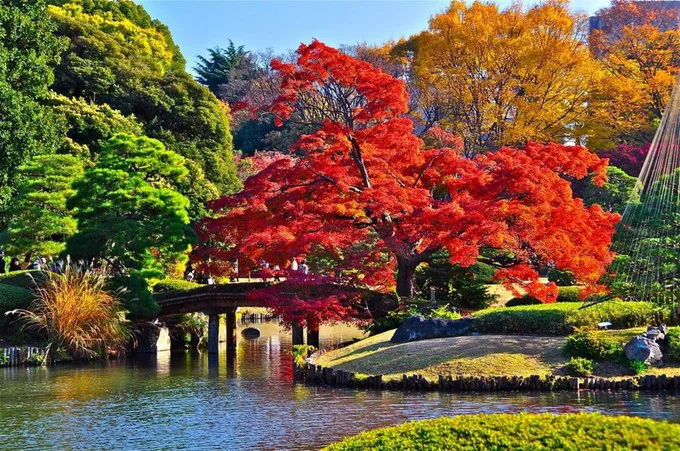
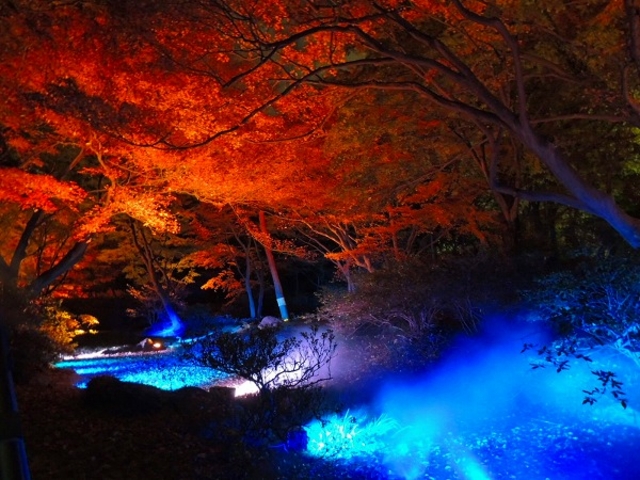
3. Showa Kinen Park (Tachikawa)
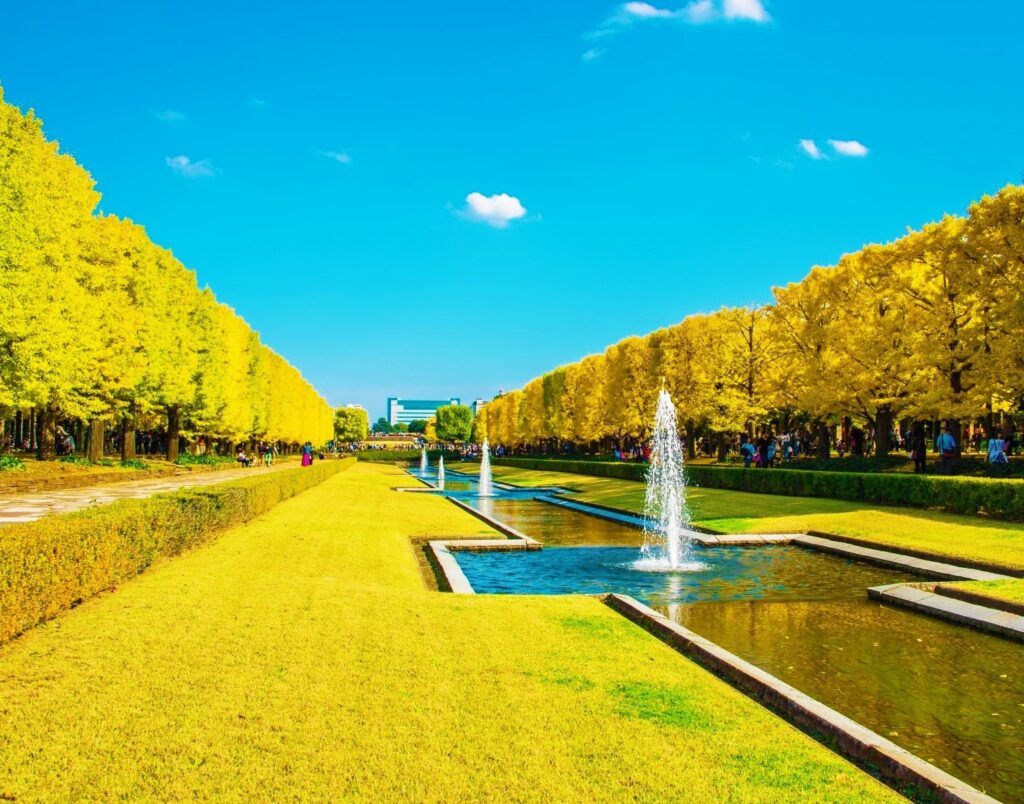
This vast park, located in western Tokyo (not in the central city but still within Tokyo Metropolis), offers ginkgo tree-lined avenues and open lawns—perfect for picnics. It’s especially popular with families, thanks to its wide-open space and extensive playgrounds designed for children. Not only can you enjoy the brilliant autumn colors, but kids can also spend hours playing on fun equipment throughout the park.
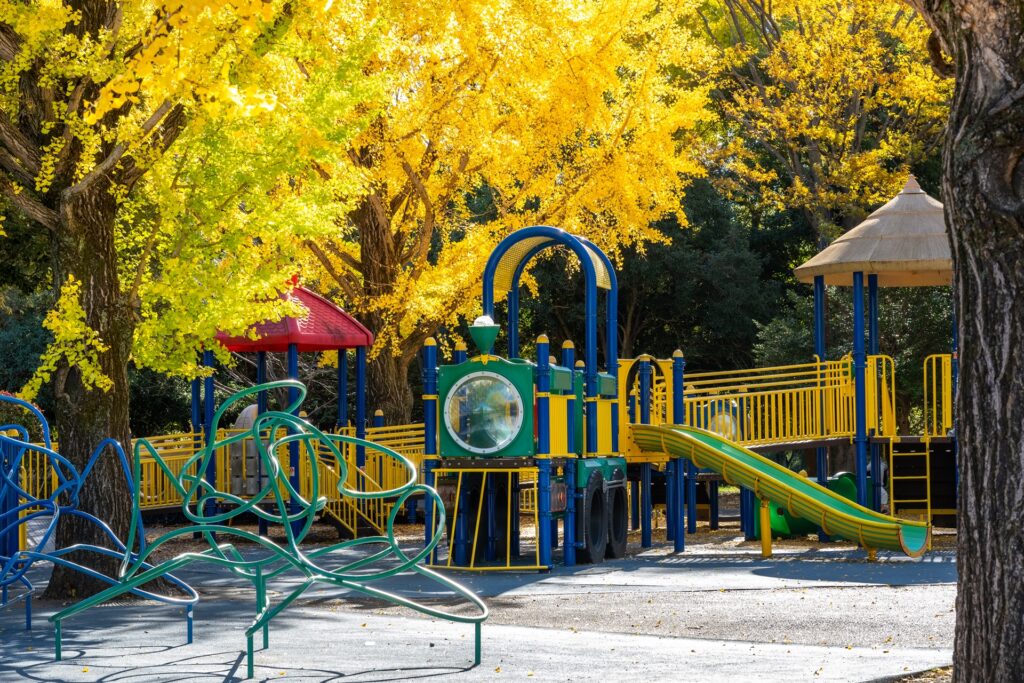
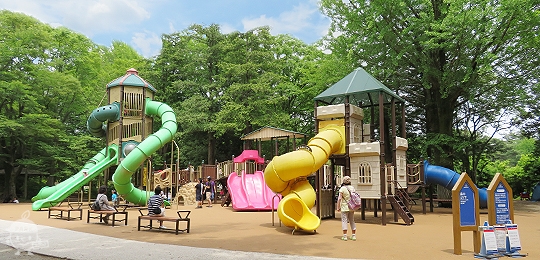
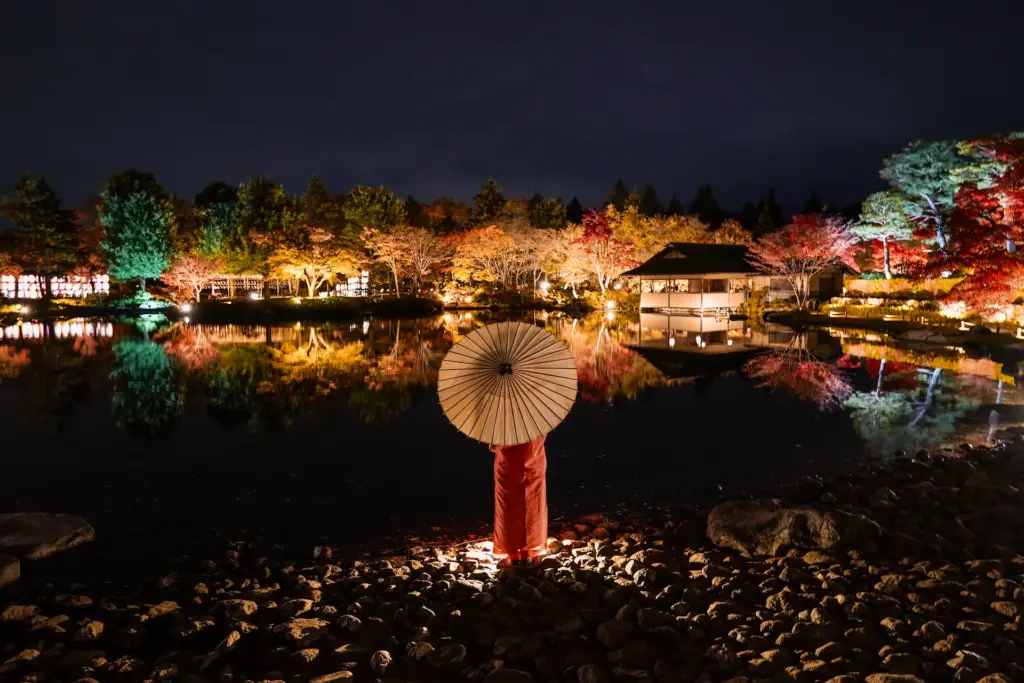
- Best time: Mid to late November
- Family-friendly: Yes
- From Tokyo Station: Approximately 1 hour by train via the JR Chuo Line
- Highlights: The famous “Ginkgo Avenue,” a large Japanese garden, kid-friendly play areas, and plenty of rental bikes and picnic spots for the whole family
🏯 Kyoto’s Iconic Koyo Spots
If you’re visiting Japan in November, Kyoto is the crown jewel of fall foliage. The city is compact and walkable, making it easy to explore multiple autumn leaf spots in a single day. Most famous locations are accessible by public transit, and many offer evening light-ups for a unique nighttime view.
1. Eikando Temple
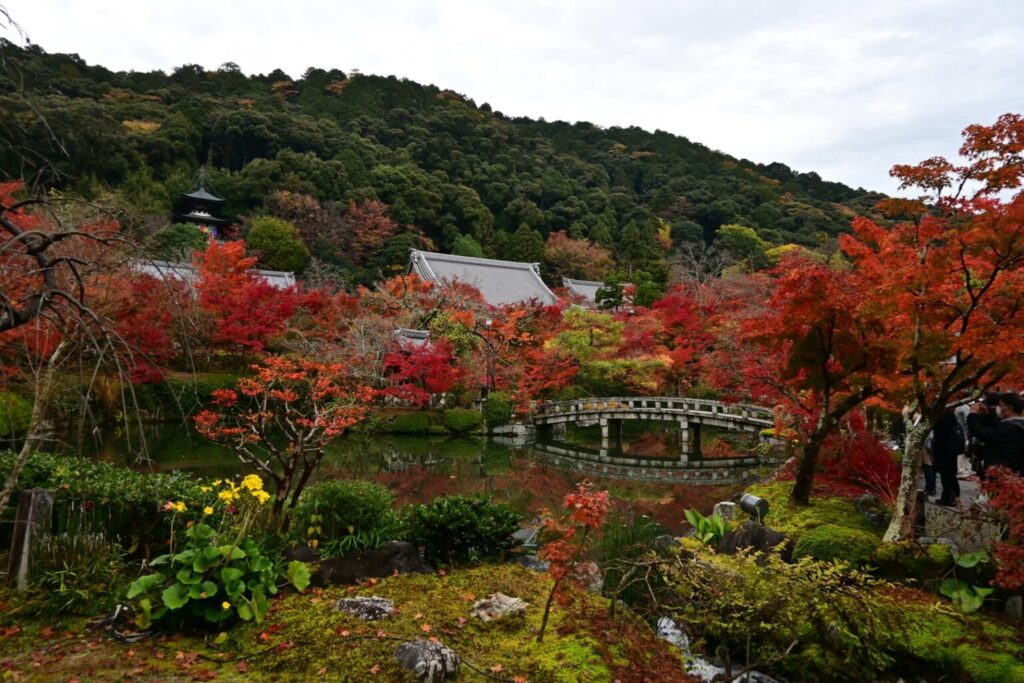
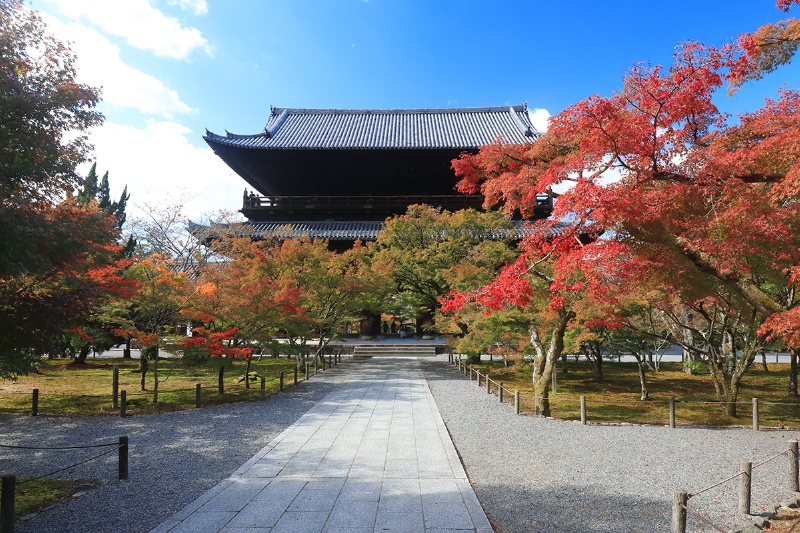
Often considered Kyoto’s top koyo spot, this temple’s gardens are filled with thousands of vibrant maples. Eikando is located just a short walk from Nanzenji Temple, making it easy to visit both in one trip. Many travelers choose to pair these two iconic spots together as a scenic walking route through Kyoto’s eastern mountains. Its hilltop pagoda offers a panoramic view of the red and gold foliage, and the temple is especially known for its stunning night illuminations.
- Best time: Mid to late November
- From Kyoto Station: About 30 minutes by subway and a short walk
- Tip: Arrive early to avoid the crowds
- Highlights: Night illuminations, reflective pond views, and elevated vistas from the pagoda
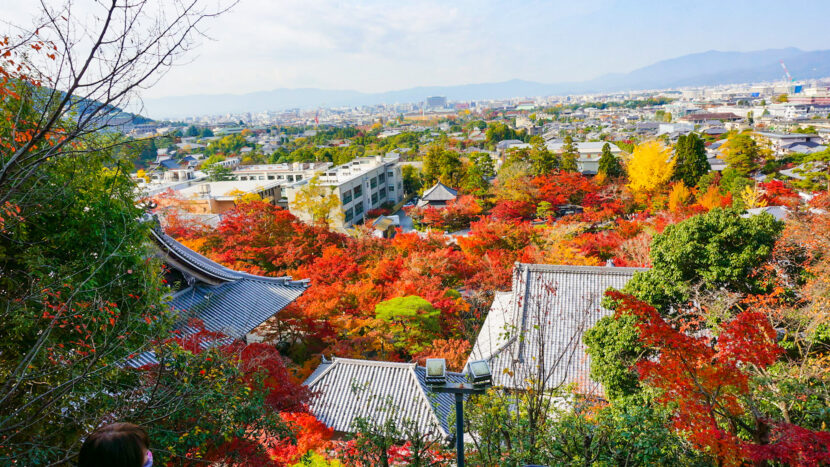

2. Arashiyama Area
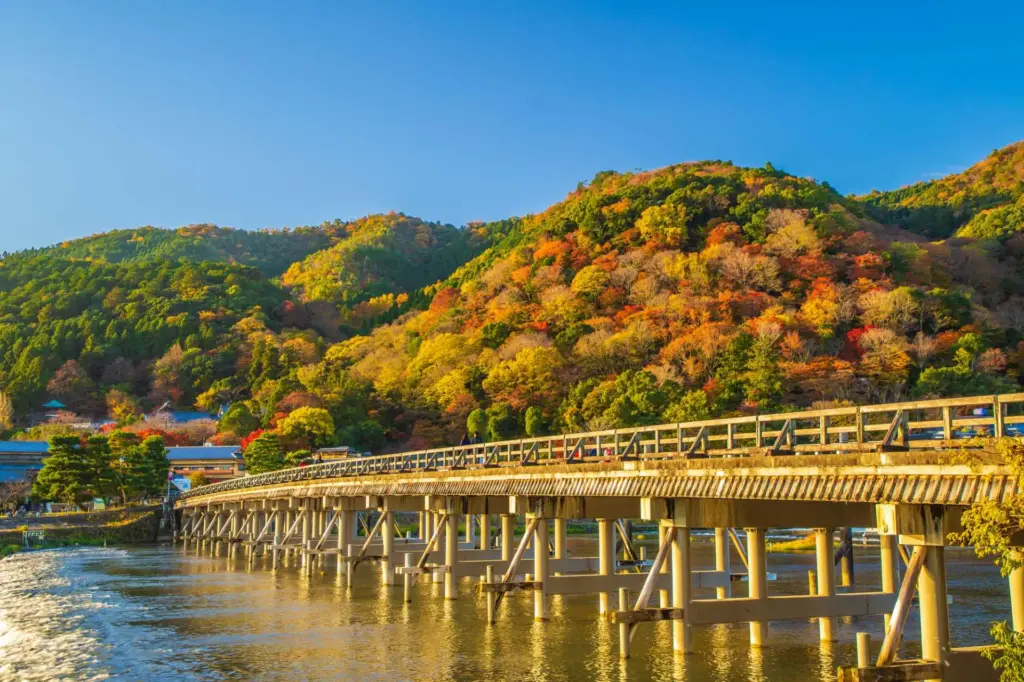
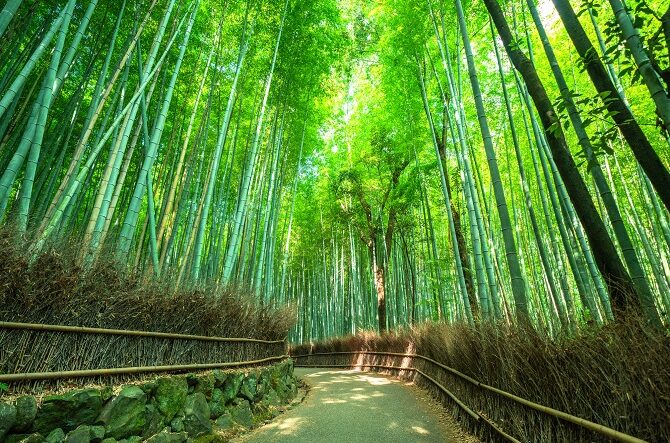
Combine your koyo viewing with a walk through the famous bamboo grove or a boat ride on the Katsura River. The area is scenic year-round, but in autumn it becomes truly magical. Don’t miss the seasonal treats sold along the streets or the view from the Sagano Scenic Railway.
Arashiyama offers a full-day experience with something for everyone—breathtaking autumn leaves, traditional food stalls, serene river views, a historic bamboo grove, and even a charming scenic train ride. With so many attractions in one compact area, it’s easy to spend an entire day here without getting bored.
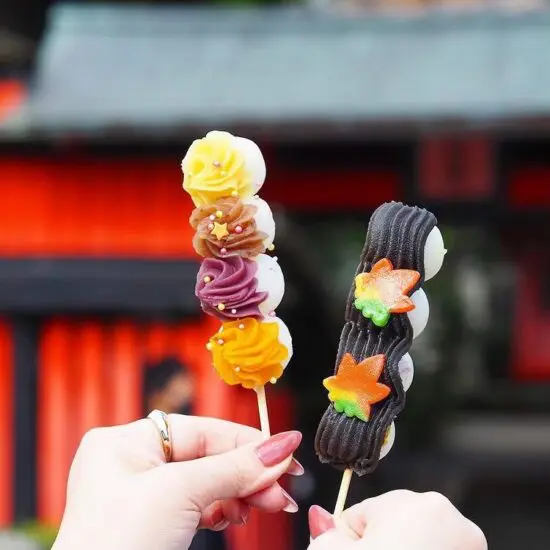
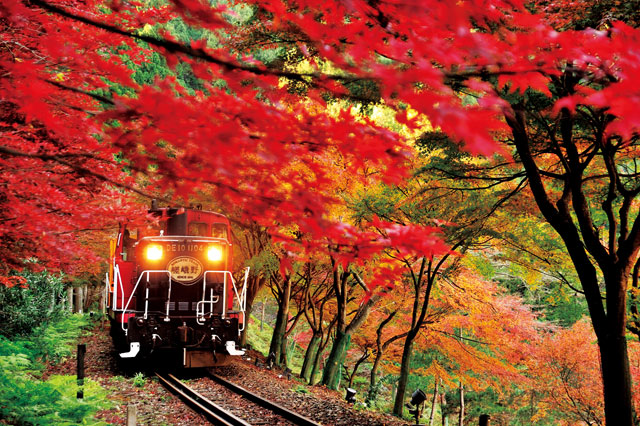
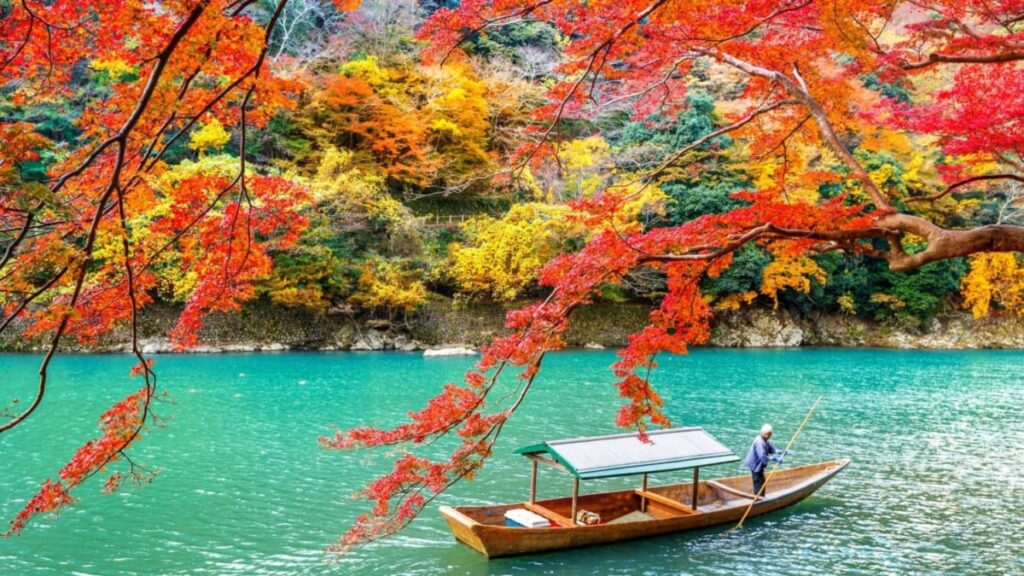
- Best time: Late November
- From Kyoto Station: About 30 minutes by train on the JR Sagano Line
- Bonus: Togetsukyo Bridge offers iconic photo ops
- Highlights: Bamboo forest, Katsura River boat ride, scenic railway, seasonal street snacks, and walkable access to multiple koyo spots
3. Kiyomizudera Temple

The temple’s main hall offers sweeping views of the forested hillside ablaze with color. The wooden stage juts out from the hillside, providing one of Kyoto’s most iconic photo spots. Evening light-ups add an ethereal glow to the already breathtaking scenery.
One of the additional charms of visiting Kiyomizudera in autumn is exploring the lively approach road (Chawan-zaka and Sannenzaka). These historic streets are lined with traditional shops and food stalls offering seasonal snacks and souvenirs, making it a great place to enjoy local treats while taking in the autumn ambiance.

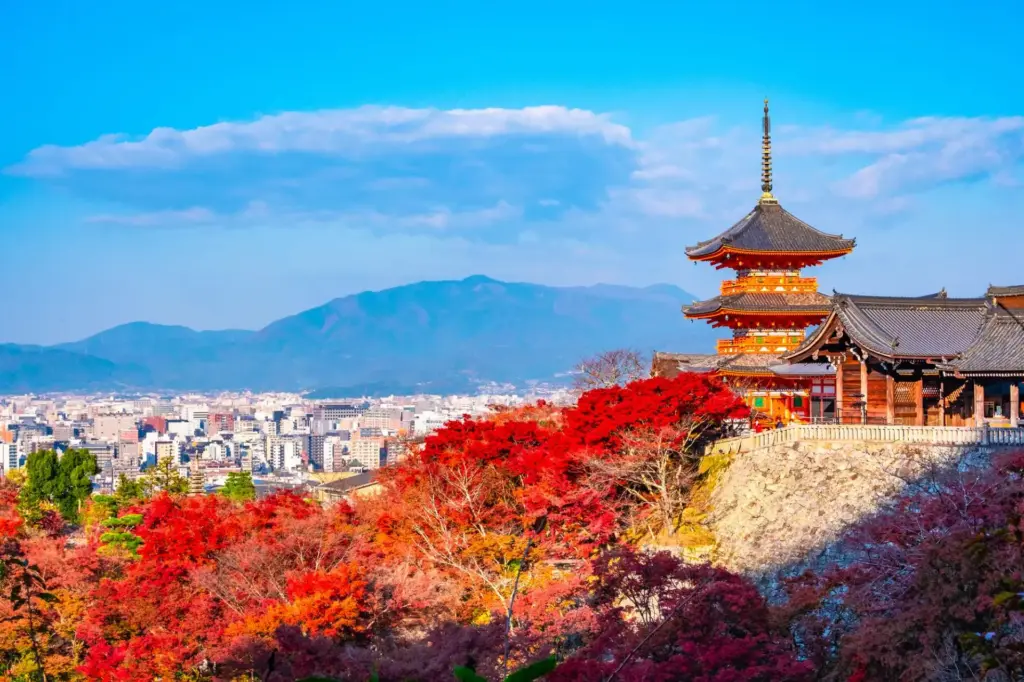
- Best time: Mid to late November
- From Kyoto Station: About 20 minutes by bus and a short walk uphill
- Evening light-up: Often held during peak season
- Highlights: Elevated viewing platform, historic temple architecture, preserved streets in Higashiyama, and food stalls along the temple approach
✨ Tokyo or Kyoto—Still Can’t Decide?
If you’re still unsure whether Tokyo or Kyoto is a better fit for your overall Japan trip, check out our comparison guide:
👉 Tokyo vs Kyoto: What Do You Want from Japan?
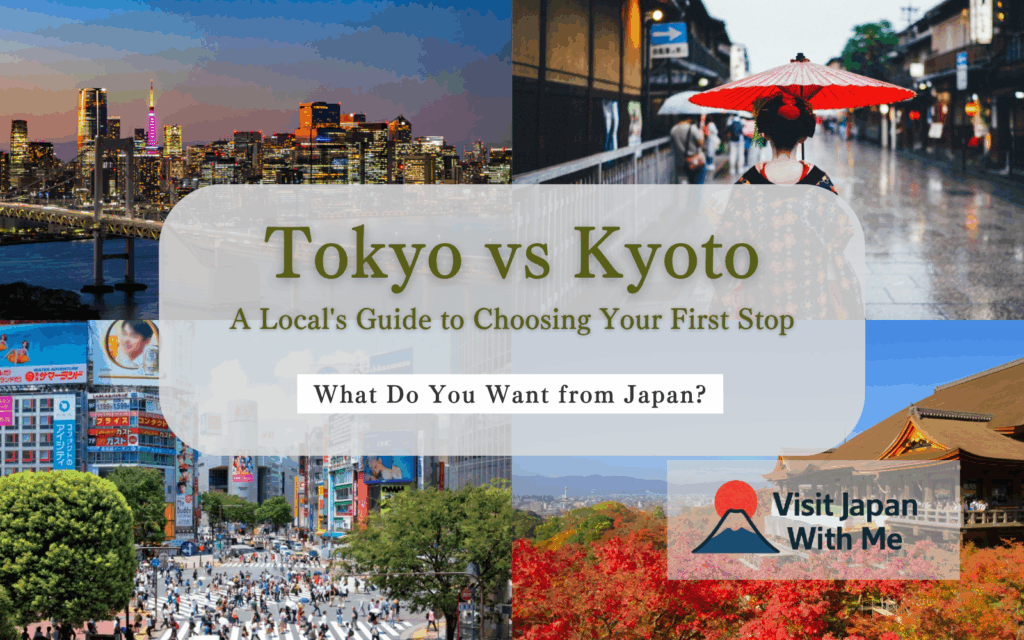
Not sure whether to visit Tokyo or Kyoto first?
It all comes down to what you want from your trip. Whether you’re drawn to Tokyo’s neon lights, pop culture, and fast-paced city life, or Kyoto’s serene temples, traditional streets, and timeless charm, this guide compares the two side-by-side—helping you choose the Japan that matches your travel dreams.
Other Amazing Autumn Spots
1. Nikko (Tochigi Prefecture)
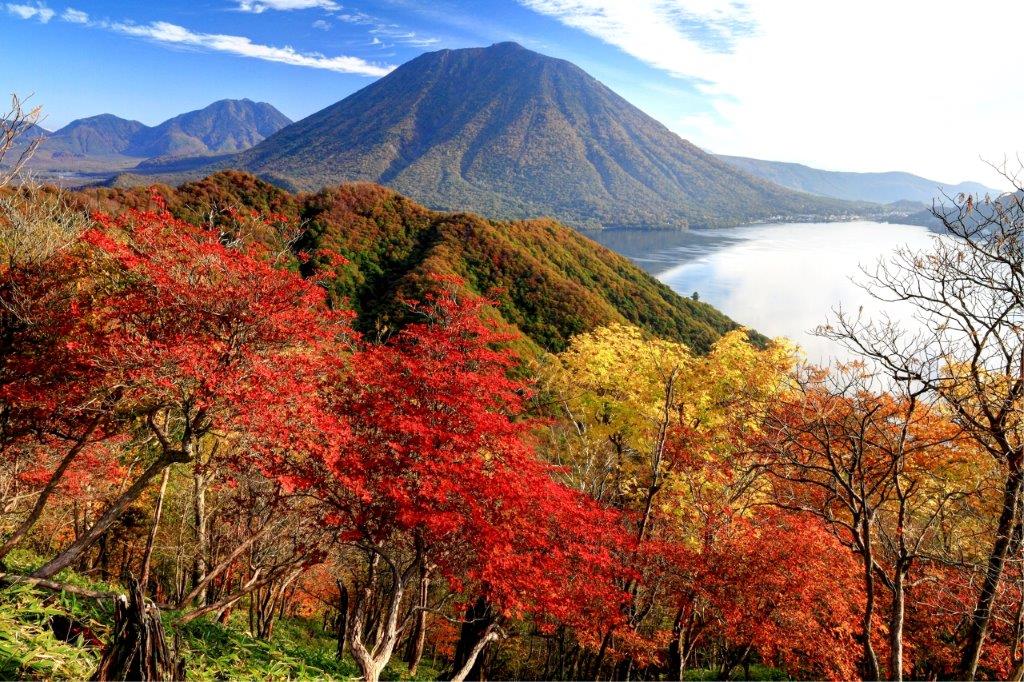
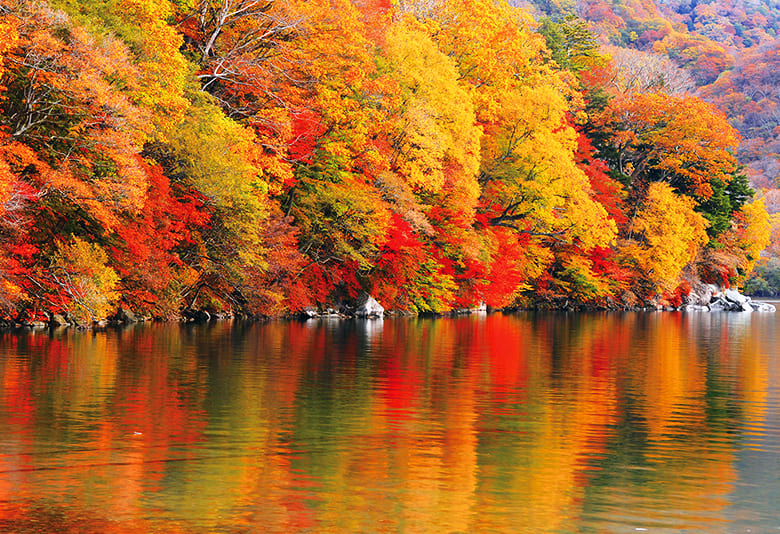
Home to UNESCO World Heritage temples and the stunning Lake Chuzenji area. The surrounding mountains and waterfalls make this a top choice for nature lovers. Nikko is especially famous for the vibrant colors around Toshogu Shrine and the dramatic foliage reflected in Lake Chuzenji.
Toshogu Shrine and Lake Chuzenji are about 20 kilometers apart. From Tobu Nikko Station, you can first visit Toshogu Shrine by bus (approx. 10 minutes). Then, take another bus heading up the scenic Irohazaka Winding Road to reach Lake Chuzenji (approx. 40 minutes). This route is especially popular in autumn, as the drive itself becomes a part of the koyo experience.
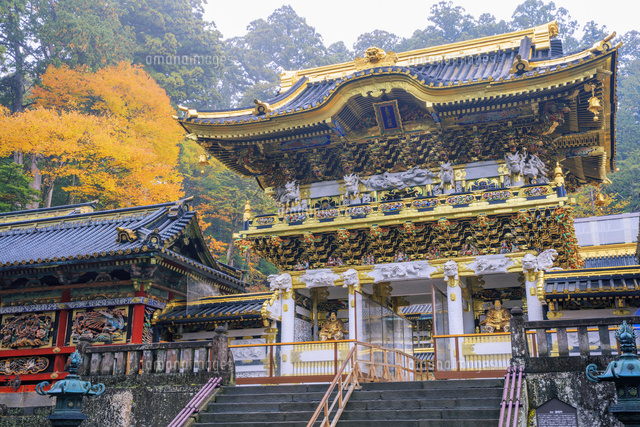
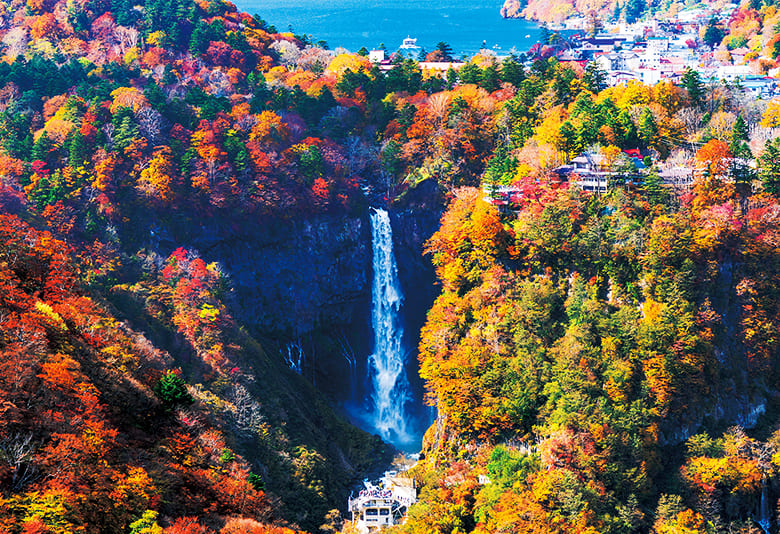
- Best time: Late October to early November
- How to get there: About 2 hours from Tokyo by train via the Tobu Nikko Line or JR Line
- Highlights: Toshogu Shrine, Kegon Falls, Lake Chuzenji, Shinkyo Bridge, and scenic autumn drives along Irohazaka Road Toshogu Shrine, Kegon Falls, Lake Chuzenji, Shinkyo Bridge, and scenic autumn drives along Irohazaka Road
2. Kamikochi (Nagano Prefecture)
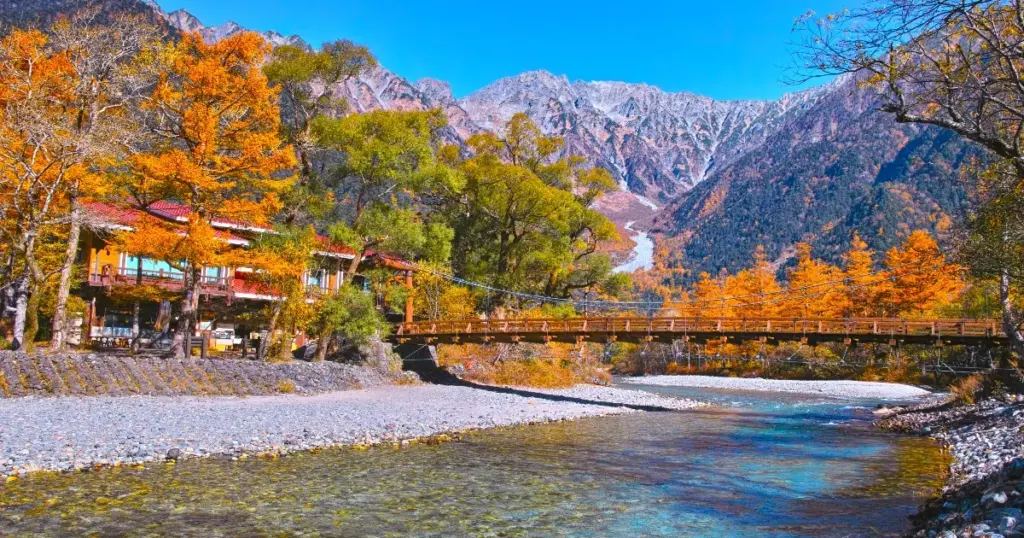
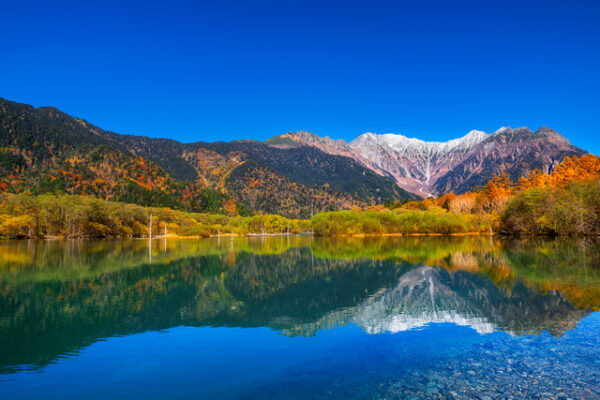
This mountain valley offers a pristine natural backdrop, perfect for hikers. The clear Azusa River, golden larch trees, and alpine peaks make it a favorite among photographers and outdoor enthusiasts. Kamikochi is part of the Chubu Sangaku National Park and is car-free, maintaining its peaceful atmosphere.
Due to the travel time required to reach Kamikochi, staying overnight is highly recommended—especially for hikers. The area offers a variety of scenic hiking trails and mountain lodges. At night, the stargazing opportunities are exceptional, with clear alpine skies free from city lights.
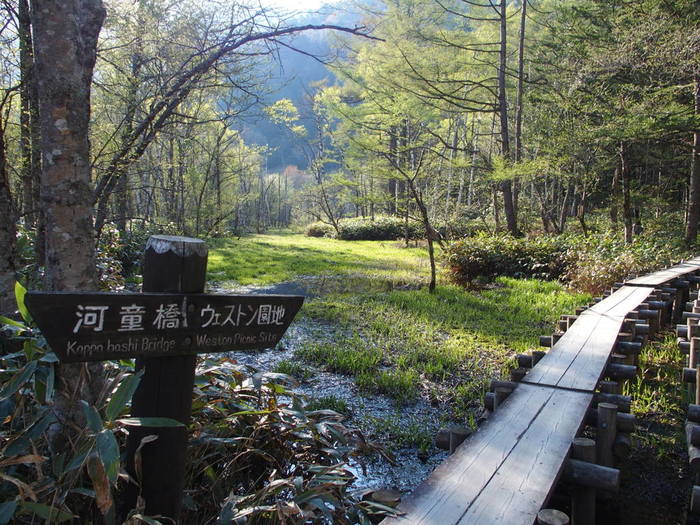
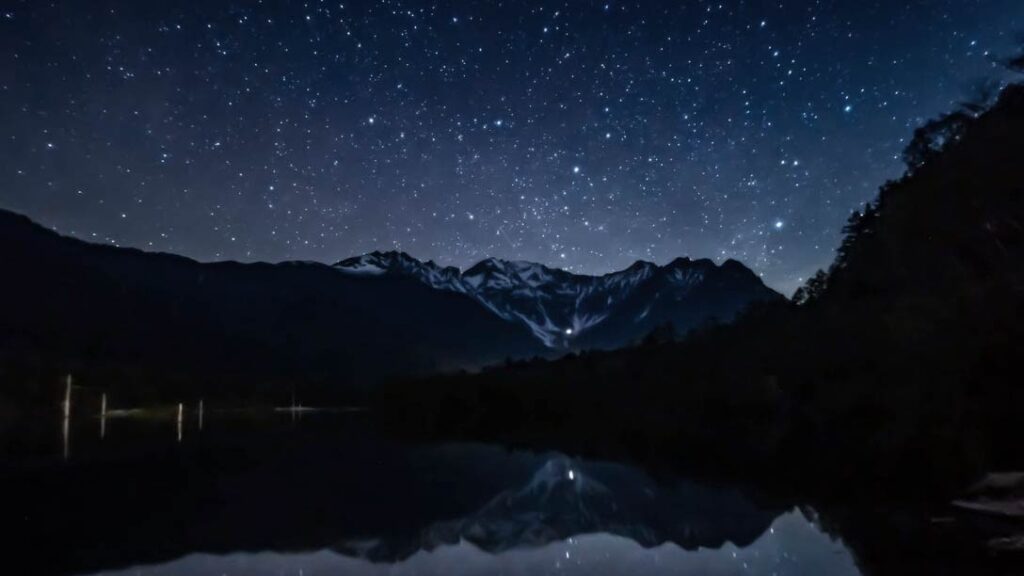
- Best time: Early to mid-October
- How to get there: From Tokyo, take the JR Azusa Limited Express to Matsumoto, then transfer to local train and bus (about 4.5–5 hours total)
- Note: Area closes in winter (around Nov. 15)
- Highlights: Kappa Bridge, Taisho Pond, scenic hikes, dramatic mountain backdrops, a rare highland ecosystem, and incredible starry skies
3. Nara Park (Nara Prefecture)
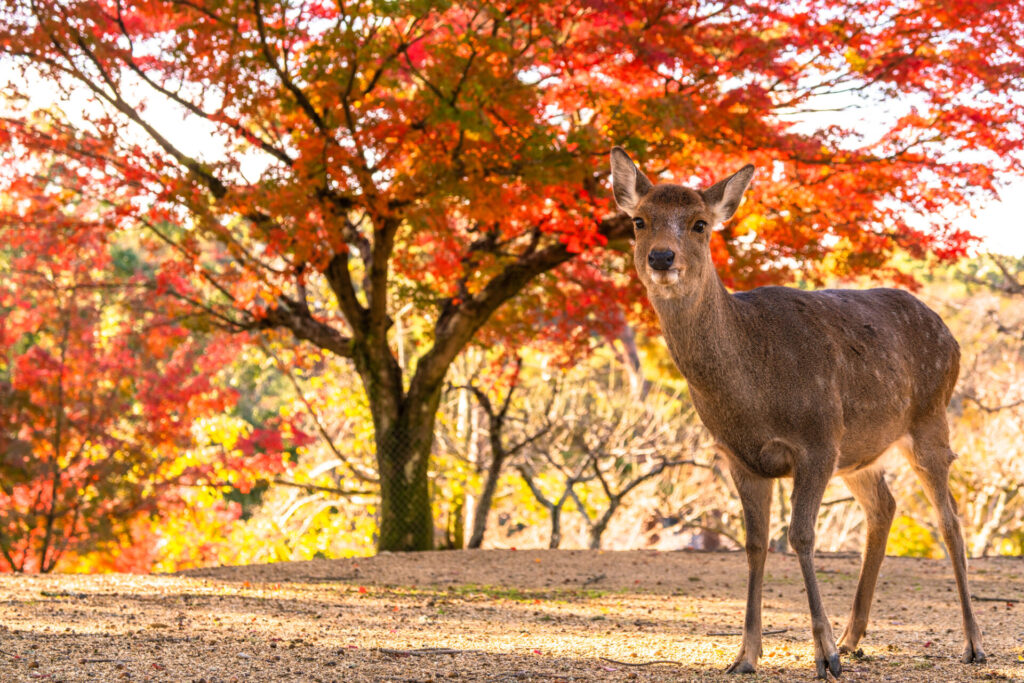
Mix koyo viewing with encounters with the park’s famous deer. Nara Park offers a unique blend of cultural heritage and natural beauty. The expansive grounds are home to ancient temples and hundreds of freely roaming deer that are accustomed to human interaction.
Since you’re already in Nara, it’s worth exploring nearby cultural landmarks such as Kofukuji Temple and the Nara National Museum. These are all within walking distance from Nara Park and provide a deeper look into Japan’s ancient capital. Plan for a half or full day to make the most of this culturally rich area.
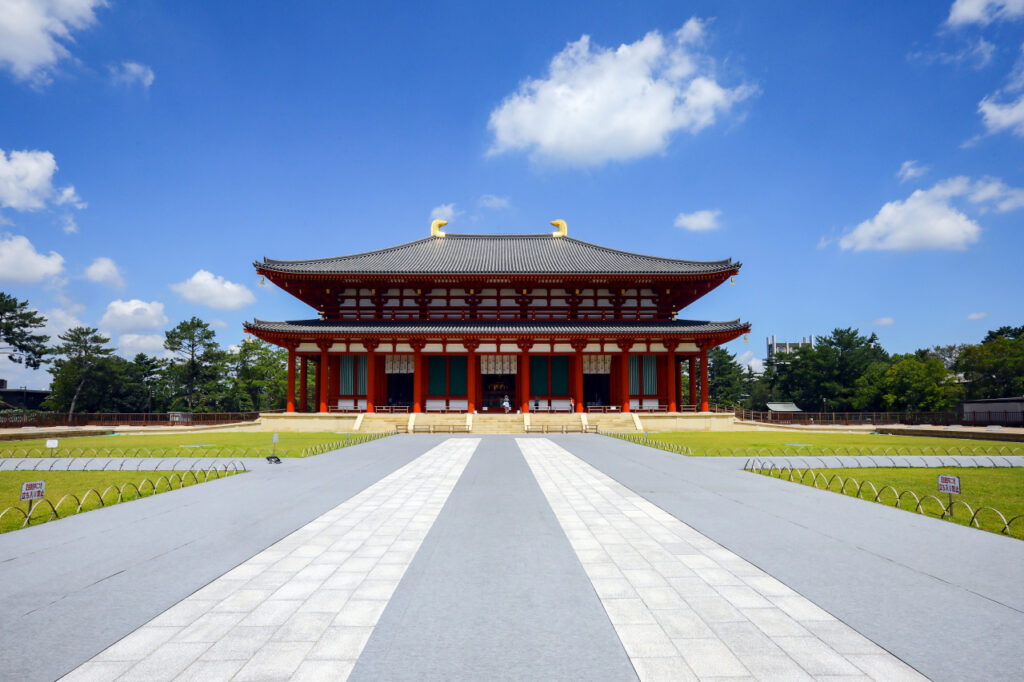
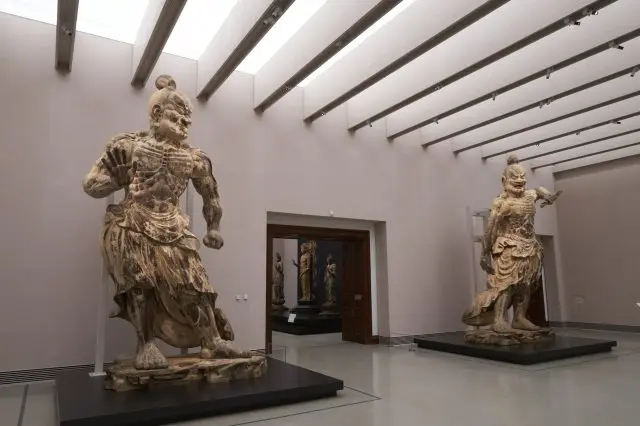
- Best time: Mid to late November
- How to get there: About 45 minutes from Kyoto or 1 hour from Osaka by train
- Highlights: Todaiji Temple’s Great Buddha, Kasuga Shrine, autumn leaves around the pond, deer-friendly snack vendors, Kofukuji Temple, and the Nara National Museum
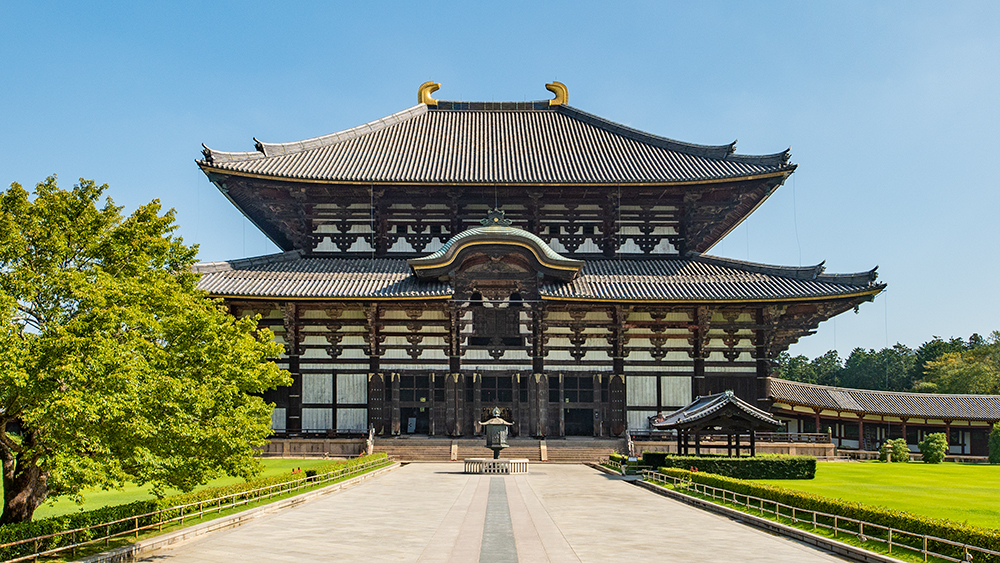
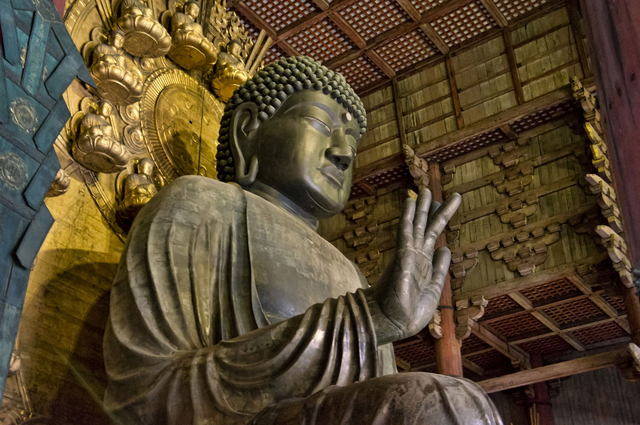
How to Check Peak Viewing Times
Before planning your trip, be sure to consult:
- Japan-Guide.com Foliage Forecast
- Weathernews.jp (Japanese site with maps)
- Local tourism board websites (often with English pages)
Note: As of now, 2025 foliage updates have not been released. We’ll update this guide as soon as new information becomes available.
Tips for Enjoying Autumn Leaves in Japan
- Visit early or late in the day to avoid crowds
- Weekdays are better than weekends
- Pack layers: mornings and evenings can be chilly
- Bring cash: Some gardens or temples don’t accept credit cards
- Respect the rules: Don’t touch trees or enter roped-off areas
Final Thoughts
Autumn in Japan is more than just beautiful scenery—it’s a cultural experience. Whether you’re strolling through temple gardens or hiking mountain trails, the koyo season will leave you with unforgettable memories.
As a local, I hope this guide helps you plan a journey full of color, calm, and discovery.
🗾 More Japan travel tips coming soon!
We’re a local team based in Japan, and we’re adding more helpful tips and real insider info soon.
Don’t miss out—bookmark this site and come back for fresh updates!
🔖 Bookmark Now
